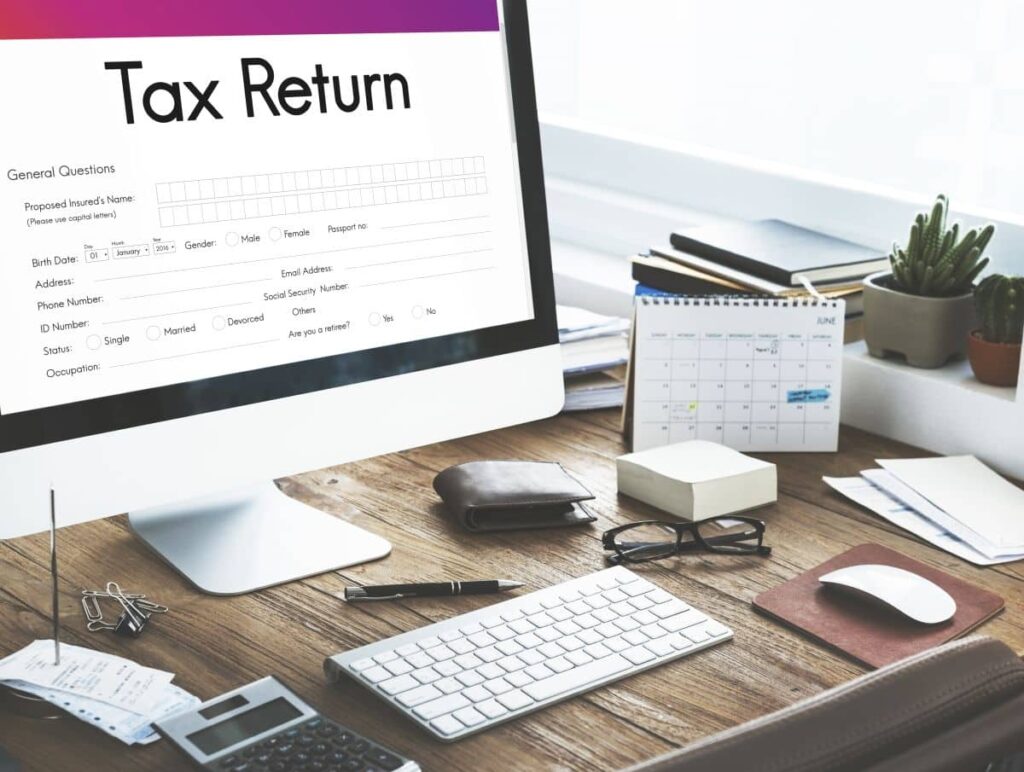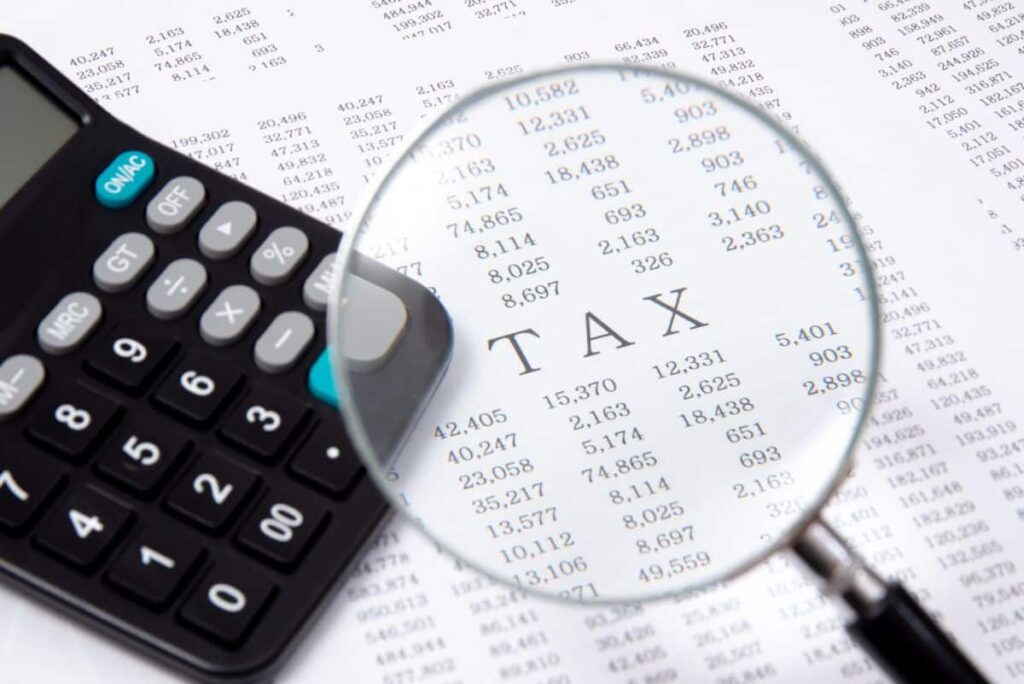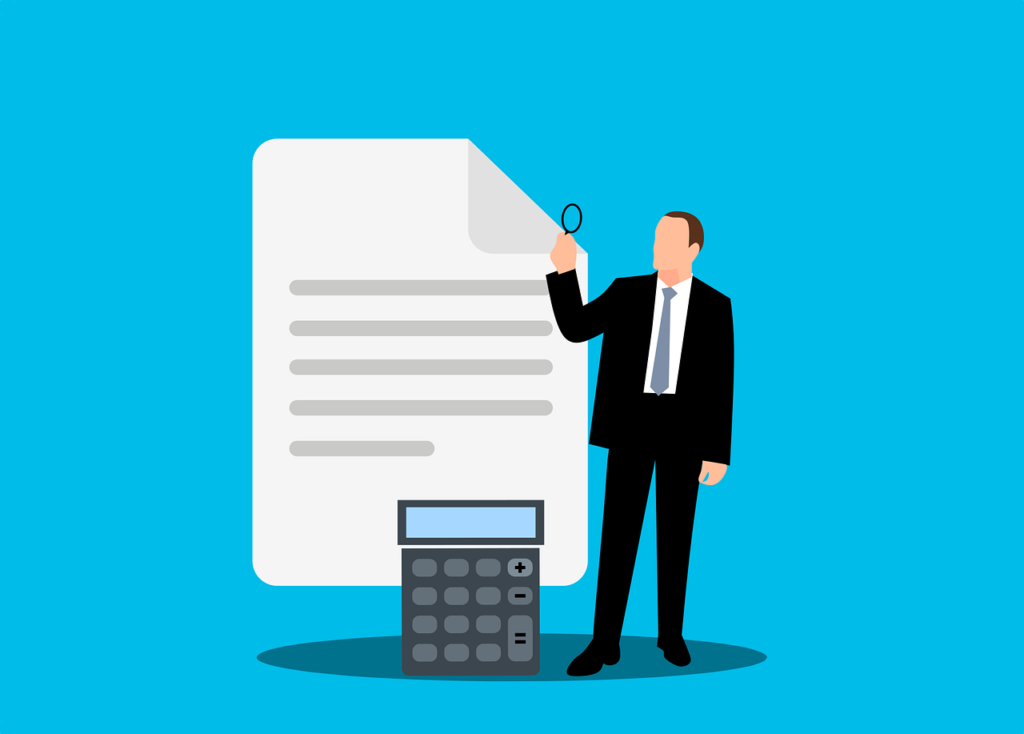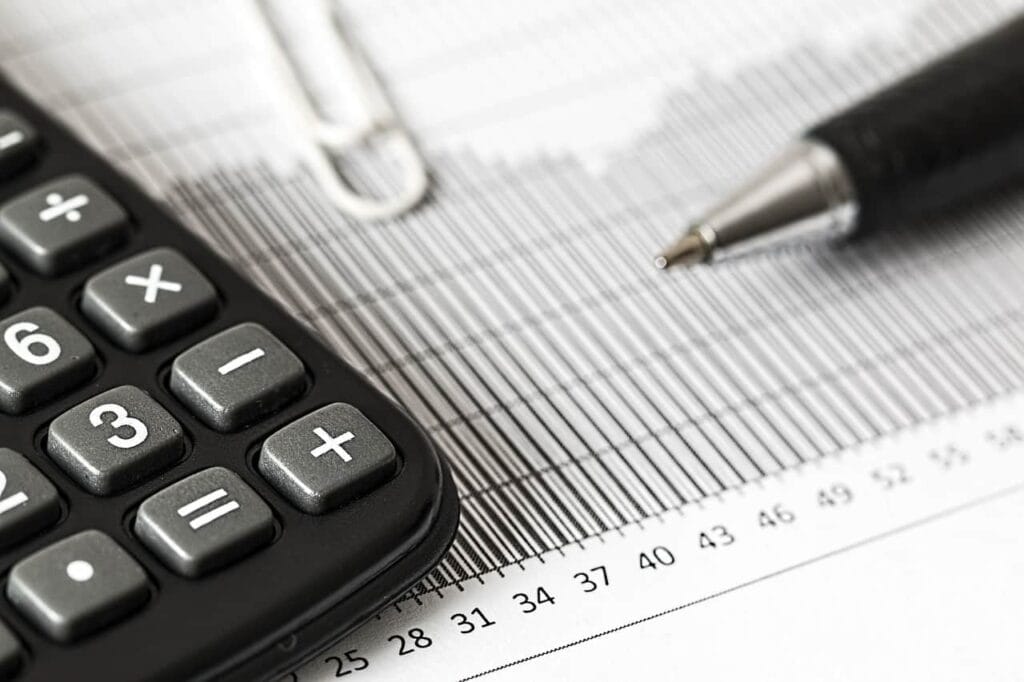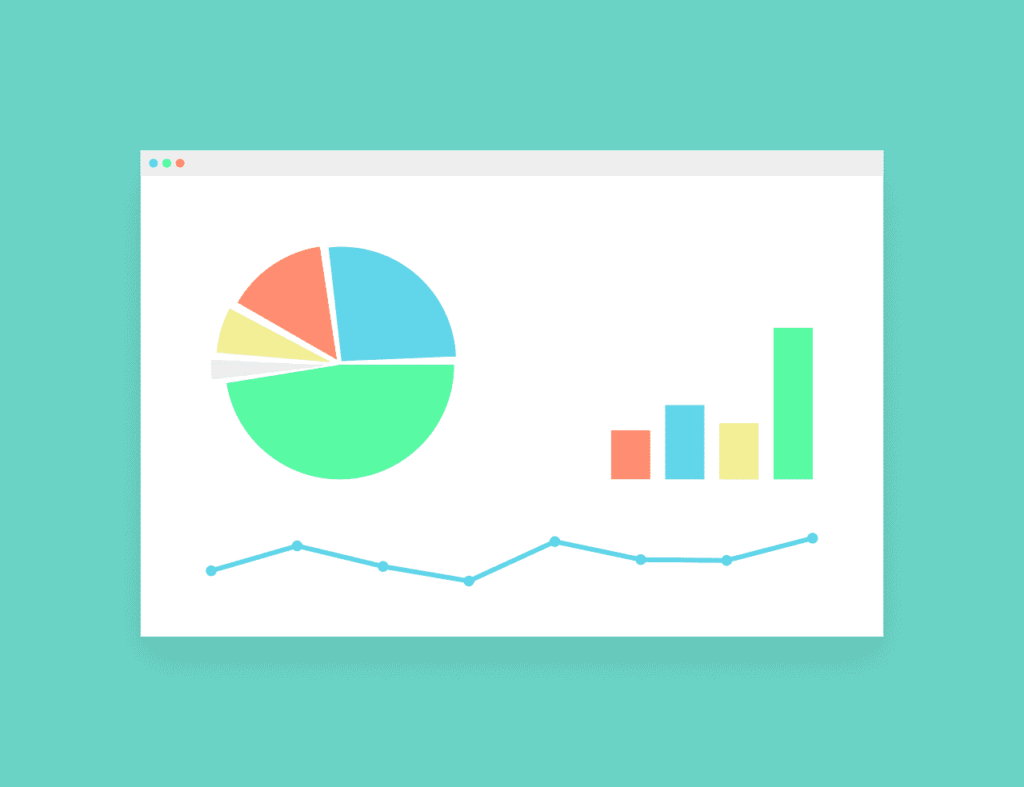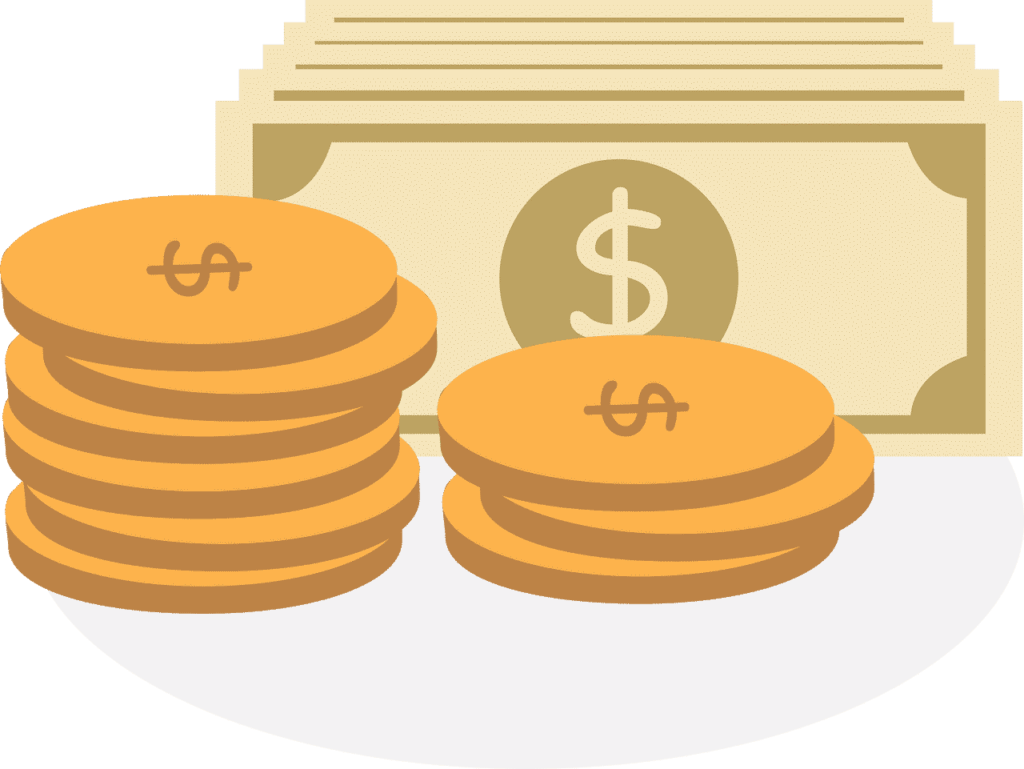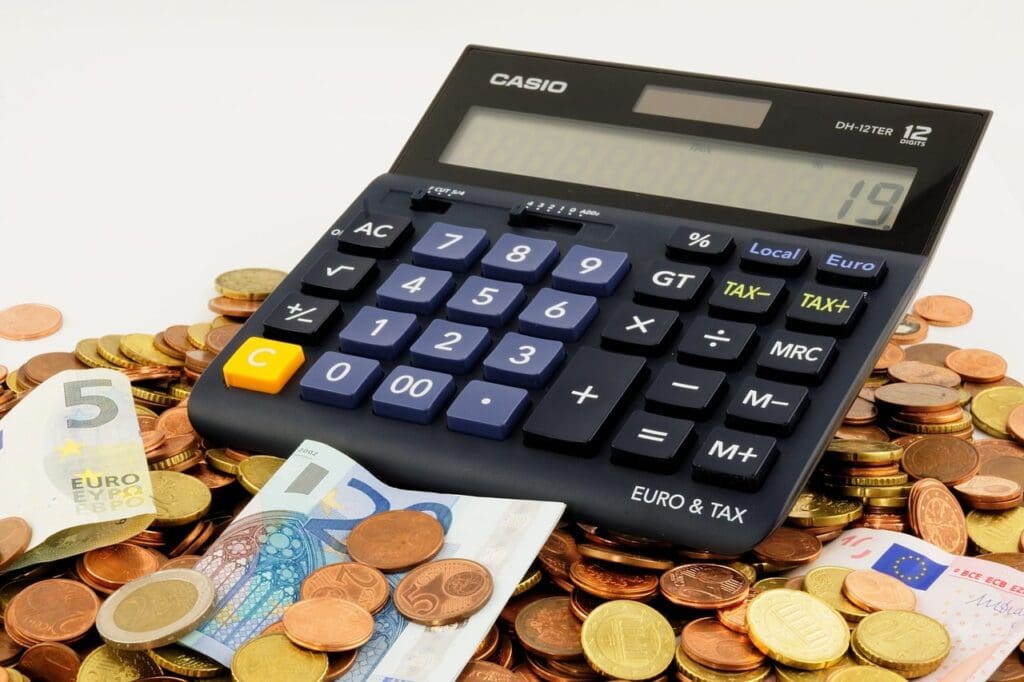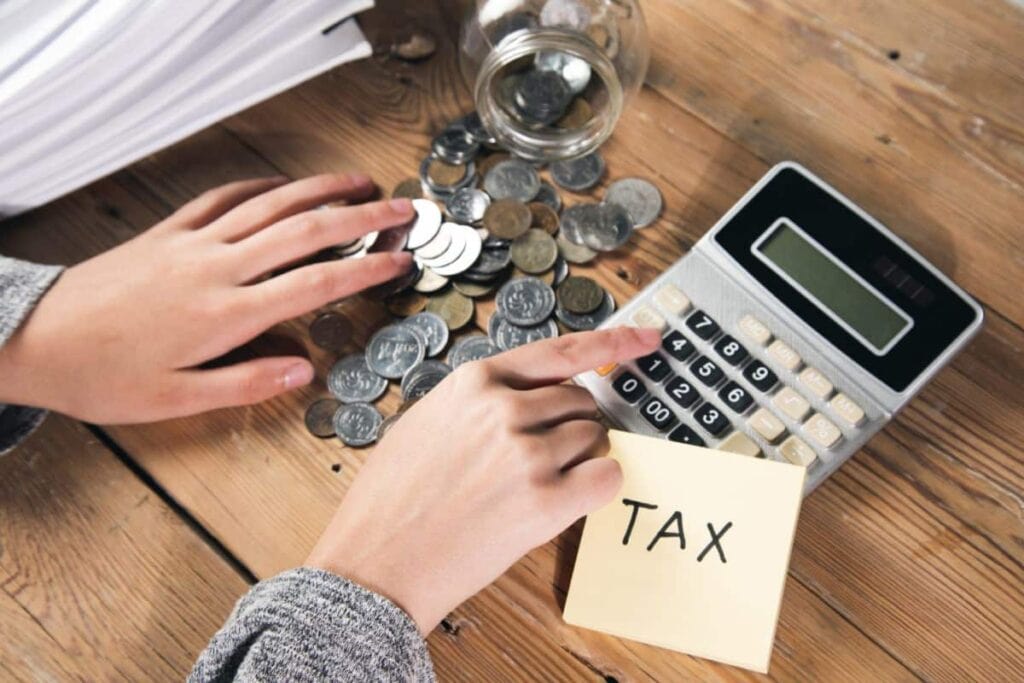A Comprehensive Guide To The Australian Taxation System
Are you a citizen of Australia or a permanent resident here? Do you have any assets in Australia such as property or shares? Do you have a job there? If this is the case, then you should educate yourself about the taxes structure used in Australia.
This article will provide a general summary of the tax brackets, rates, and deductions that are available to Australian taxpayers. Continue reading in order to obtain all of the information you require, regardless of whether this is your first time filing taxes or whether you simply want to refresh your memory.
This tutorial will walk you through the fundamentals of Australia's taxation system, including who is required to pay income tax, how to lodge a tax return and the potential deductions and allowances that are available to you. It should be required reading for everybody who is getting ready to file their annual tax return.
Read on for an in-depth guide to the tax system in Australia, which is useful whether you are filing your taxes for the first time or simply want to ensure that you are taking advantage of all the deductions that are available to you.
For people who are new to the country, the Australian taxes system might be difficult to understand. This guide gives an overview of the primary taxes and explains how they operate, making it easier to comprehend the tax system as a whole. However, it is essential to keep in mind that the information presented here is only intended to serve as a general reference, and if you require specialized assistance, you should always consult with an accountant or tax specialist. Keeping all of this in mind, let's get this party started!
The income tax is typically the first form of taxation that individuals are required to deal with. This tax is paid on any and all of your profits, including wages, salaries, dividends, interest, and rent, so long as those earnings are above a certain threshold. The rate that you pay is proportional to the amount of money that you earn and can range anywhere from 0 percent to 45 percent, with smaller earners being subject to a lower rate and higher earners being subject to a greater rate.
Because of how complicated the taxes system in Australia can be, it is essential to have a solid understanding of how it functions. In this article, we will present an outline of the primary taxes for which you can be responsible as well as for instructions on how to file your tax return. In addition to that, we will provide some suggestions for lowering the amount of taxes you owe.
It is not always easy to figure out how everything works, especially if you are a foreigner in the country or even if you are a citizen of Australia but have never filed your taxes in Australia before. In this tutorial, we will provide an overview of the fundamentals of the taxation system in Australia as well as an explanation of some of the fundamental ideas that you need to understand in order to submit your taxes.
We will also provide information regarding the specifics of when you need to file your tax return as well as the type of tax-related documents that has to be prepared by you. Continue reading if you want to learn everything you need to know about the Australian tax system, regardless of whether this is your first time filing taxes or you just want a refresher course!
You are obligated to file tax returns and pay tax on your income and capital gains if you are an Australian citizen or a resident of the country. However, navigating the Australian taxes system can be difficult, therefore in this post, we will present a tutorial to help you better grasp how the system operates.
In this section, we will discuss the many categories of taxes for which you might be responsible, as well as offer some suggestions for lowering your income that is subject to taxation. Make sure that you have studied our guide on the Australian taxes system whether you are just beginning your working life or are getting close to retiring. This information is important for everyone!
Let's get started!
Tax on capital gains in Australia
Generally speaking, the purpose of the tax system in Australia is to provide financial support for the Commonwealth government. The Australian Taxation Office (ATO) is in charge of collecting it, and the Australian government puts it toward helping cover the costs of government operations.
When it comes to individuals, the sorts of income that are subject to taxation include a person's salary or wages, as well as financial gains, gained when a person sells particular kinds of assets. The acronym for this tax is CGT, which stands for the Capital Gains Tax.
The capital gains tax (CGT) is a sword with two edges because it can either raise or lower your tax bill, depending on whether you made a profit or a loss on the sale of the item when compared to what you paid for it initially. This is a classic case of a two-edged sword.
While there are many various types of taxes in Australia, the largest source of revenue for the government comes from the taxing of income, which accounts for around 75 percent of the total income that is taxable.
1. Laws and regulations
While there are a number of Acts that make up Australian tax law, the Income Tax Assessment Act of 1997(Cth) is the primary legislation that oversees capital gains taxation. As a consequence of this, another name for this Act is the ITAA97.
2. What exactly is the tax on capital gains?
When you acquire stocks, real estate, or other assets at one price and then sell them at a different price, the difference between those two amounts represents either a capital gain or a capital loss for you.
You will have made a capital gain if the amount that you receive for your assets is greater than the amount that you bought for them. If this occurs, you may be required to pay tax on the capital gain.
3. In what circumstances does CGT apply?
According to subsection 102-20 of the Act, CGT rules apply to any gains or losses that are incurred when a CGT event takes place.
A transaction that results in a person making a gain or a loss when they dispose of a capital gains tax asset is referred to as a CGT event. The sale of an asset is the most usual way to accomplish this goal.
The definition of what comprises a capital gains tax asset can be found in Section 102-5 of the Act. "any sort of property of legal or equitable right that is not property" is the definition of a capital gains asset.
Consequently, a capital gains tax asset can be nearly everything that an individual can own. This includes real estate, stocks, and other forms of investment property.
4. When do Capital Gains not apply?
There are a few exemptions to the general rules that define a capital gains tax asset. For instance, capital gains tax does not apply to losses or profits incurred as a result of the sale of a person's primary house.
The address at which a person spends the majority of their time is referred to as their primary residence. Because of this, individuals are able to buy and sell their own properties without incurring any tax liability.
In general, capital gains and losses incurred on assets that were purchased prior to the implementation of the CGT regime on September 20, 1985, are not subject to CGT.
Other probable exceptions to the CGT include the following:
- Cars, motorbikes, and other comparable modes of transportation. These types of assets could be subject to a capital gains tax, often known as stamp duty, which is levied by the state or territory.
- Items of collecting value that is priced at less than $500 total;
- Decorations bestowed on a person in recognition of his or her valour or bravery (unless the decoration was purchased);
- A piece of residential real estate that served as the primary dwelling of the taxpayer. Stamp duty may be levied on this type of asset by the state or territory in which it is located.
- The monetary compensation that was awarded for injuries;
- An asset that is utilized in the production of tax-exempt income;
- Less than $10,000 is realized from the sale of assets that were initially acquired for private use.
5. How much Capital Gains Tax will I pay?
The amount of capital gains tax that you will be responsible for paying is determined by a number of criteria, such as the length of time that you have owned the item in question, the marginal tax rate that you are subject to, and whether or not you have also incurred any capital losses.
Your capital gain will be included in your assessable income in the tax return that you file for that particular fiscal year, which is why it is crucial to know your marginal tax rate.
The length of time that you have had your asset is essential because, for instance, if you have owned shares for more than a year, you can often receive a discount on your capital gain equal to 50 percent of the original amount.
6. What is a CGT event?
A capital gains tax (CGT) event occurs when an asset is sold, such as shares of stock or investment property, or when its ownership is transferred to another person.
The point at which you either realize a capital gain or suffer a capital loss is referred to as the CGT event.
The distribution of a capital gain to you by a managed fund, from which you own units, is an example of another type of CGT event.
7. Timing of events
The point in time at which a CGT event takes place varies greatly from one type of asset to the next. If, for instance, the asset is acquired in its entirety, the date of the acquisition will be the date that is taken into consideration when calculating CGT. If, on the other hand, the asset in question is a house or a piece of land, the date that is significant is not the day on which the parties settle their differences but rather the date on which they enter into the purchase contract.
8. What happens if I inherit assets?
In most cases, the only time a CGT event will occur is when you sell assets that you have inherited.
If the deceased person purchased the assets after the 20th of September, 1985, when CGT was first implemented, then the person who inherits the assets will be responsible for determining the cost base of the assets. The cost base could be any of the following, depending on the asset:
- The existing cost base of the deceased person who originally bought the assets; or
- The market value of the assets at the time of death
If the deceased person acquired the assets before the 20th of September in 1985, then the person who will inherit those assets is considered to have acquired them at the time of the deceased person's death. After then, the cost base will often be determined to be the same as the market value of the assets at that point in time.
9. What happens if I make a capital loss?
f you sell your assets for less than you purchased them, you will have incurred a loss on the capital value of those assets.
Within the same accounting year, if you have a capital loss you are eligible to reduce a capital gain.
You can normally carry forward a capital loss and deduct it against any capital gains you earn in subsequent years. This is the case even if your capital losses are bigger than your capital gains or if you incur a capital loss in a financial year in which you don't generate a capital gain.
10. Complying with CGT requirements
People who purchase a capital gains asset, such as an investment property, are required to maintain complete and accurate records of all expenses, transactions, and repairs pertaining to the property. These records should include all relevant receipts. When the asset is sold at a later date, any potential gain or loss on the asset's investment will be precisely calculated using this method.
When a person acquires a CGT asset as a gift, for less than its market value from a family member or friend, or when an investment property has been a person's main residence for only a portion of the time they owned it, CGT can involve complex rules and calculations. For example, when a person acquires a CGT asset as a gift, for less than its market value from a family member or friend.
When issues of this nature occur with regard to your CGT duties, you should seek the assistance of a specialist.
Making Superannuation Contributions
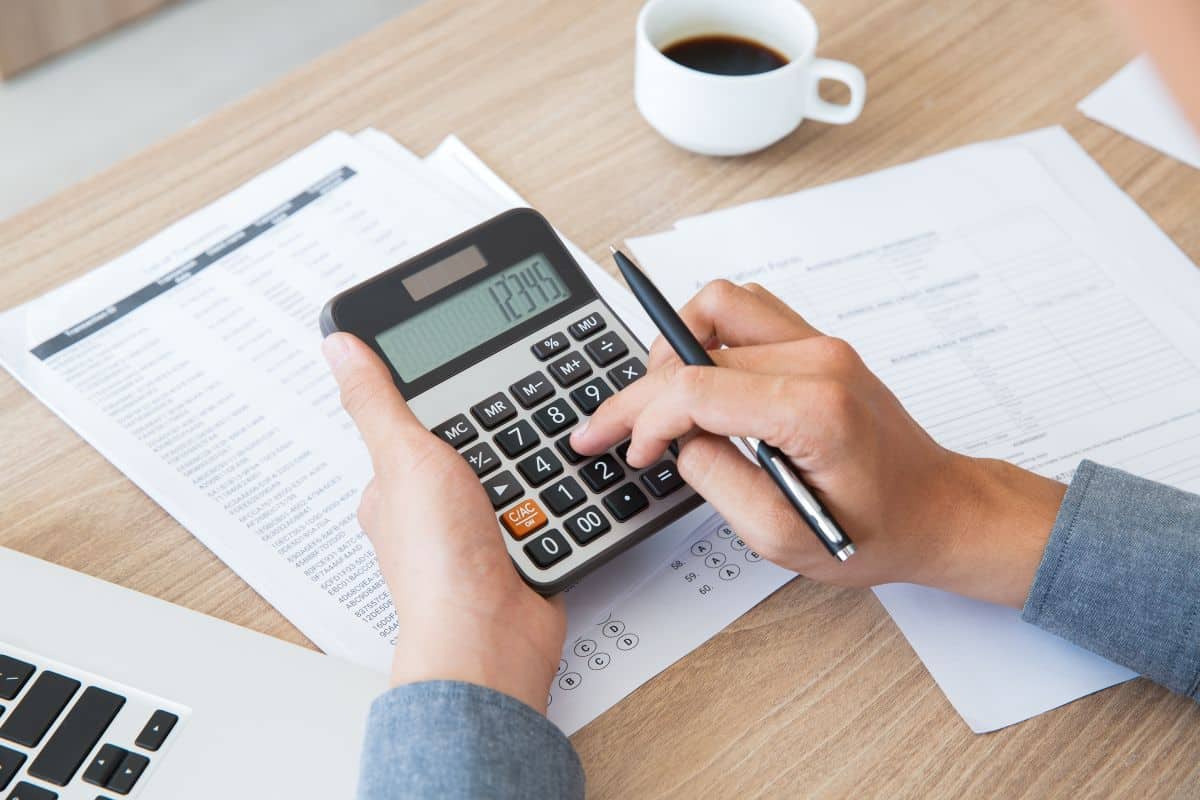
1. It all comes down to the tax
Remembering that the amount of tax you pay is the most important factor in determining how much you should contribute to your retirement account is essential. There are two primary varieties of retirement savings contributions:
- Concessional (before-tax) contributions
- Non-concessional (after-tax) or personal contributions.
If you meet the requirements laid out by the Australian government, you may be eligible to receive financial assistance in the form of contributions to your retirement account.
2. There are annual caps on your contributions
Because there are tax advantages to keeping savings in your super account, the government places strict annual caps or limits on both your concessional (before-tax) and non-concessional (after-tax) contributions into your super account. These caps and limits are in place so that no one can contribute more than the maximum allowed amount.
The limits are indexed, and the additional tax will be applied to any contributions you make that are in excess of these yearly limits. The limits are calculated based on the aggregate value of all of your super accounts, regardless of which super funds they are held in.
Please take into consideration that the general yearly restrictions pertain to a company's fiscal year, which begins on July 1 and ends on June 30 of the following year (1 January to 31 December the same year).
3. Concessional (before-tax) contributions
- $27,500 no matter how old you are;
- If your Total Super Balance was less than $500,000 on the 30th of June of the previous financial year, you have the ability to roll forward any unused amount of your cap for a period of up to five years in order to make a carry-forward contribution.
4. Non-concessional (after-tax) contributions
- 110,000 if the total balance of your superannuation account is less than $1.7 million;
- $330,000 over the course of three years if you are younger than 67 years old and make use of the bring-forward rule;
- Nil, as long as your Total Super Balance is at least $1.7 million.
Important information: The general annual concessional contribution maximum was set at $25,000, and the non-concessional contribution cap was set at $100,000, beginning on July 1, 2017, and continuing through June 30, 2021. The limit on the Total Super Balance could not exceed $1.6 million.
If you were younger than 65 years old, you were eligible to take advantage of the bring-forward provision, which permits bigger super contributions for a number of years. On the other hand, in June of 2021, new laws were enacted that made it possible for people aged 65 and 66 to take advantage of these kinds of arrangements.
There are 5 primary categories of concessional (pre-tax) super contributions.
When concessional payments to your super account are made, you will be subject to a contributions tax of 15%. This is due to the fact that concessional contributions are deducted from your income before taxes are taken off.
1. Superannuation Guarantee (SG) contributions
As a component of your entire compensation package, the mandatory payments to your superannuation fund that must be provided by your employer are referred to as salary sacrifice contributions or SG contributions. In the fiscal year 2021–2022, the rate of SG was set at 10% of your usual time earnings (OTE). This is now scheduled to gradually increase to 12 percent on the first of July in 2025.
When an employee earns at least $450 per month, an employer is required to make SG contributions on the employee's behalf. Additionally, if you are under the age of 18, you are required to work in excess of 30 hours per week.
2. Award contributions
Your employer may be compelled to make certain super contributions if those contributions are outlined in particular Employment Awards or Agreements. Contributions like these are typically made by employees who are at least 18 years old but work fewer than 30 hours per week or who are at least 75 years old but are ineligible for SG contributions.
These retirement contributions are determined by the specific Employment Award or Agreement that has been approved by an industrial authority such as the Fair Work Commission.
3. Additional financial contributions from the employer
These are contributions provided by an employer on top of the mandatory amount required under the SG Act or the Employment Award. These contributions are voluntary. In most cases, they are included in the compensation package that workers receive from large corporations, and certain workers in the public sector also receive them.
4. Salary sacrifice
An arrangement between you and your employer to have some portion of your pre-tax salary paid directly into your superannuation account constitutes a salary sacrifice contribution. Salary sacrifice contributions are also known as salary reduction contributions.
At the beginning of the fiscal year, you will make a decision regarding the amount that you wish your employer to deposit into your superannuation account throughout each pay cycle prior to the deduction of income tax from your salary or wages.
You can lower your taxable income and, consequently, the amount of tax that you owe if you participate in a salary reduction arrangement (SRA).
If you earn more than $18,200 per year, this could be beneficial for you since instead of paying the higher marginal tax rate that applies to your salary or wages, you will only pay 15% tax on your contribution to your superannuation account.
(You may be required to pay an additional 15 percent on any or all of your super contributions in 2021–22 if your income and concessional contributions total more than $250,000.)
Your employer is required to pay the amount that you chose to salary sacrifice from your salary or wages in addition to the 10 percent SG contribution that they are required by law to pay. This obligation is placed on your employer by the government.
It became against the law for employers to use your salary-sacrifice contributions to reduce the amount of SG they were obligated to pay into your super account beginning on the first of January, 2020, when new legislation was brought into effect.
Contributions made through salary sacrifice can be made until the age of 67, but if you are between the ages of 67 and 74, you will be required to pass a work test. After the age of 75, you are no longer eligible to make these payments.
5. Personal contributions for which you claim a tax deduction
Employees have been barred from making contributions of this nature to their superannuation accounts for a significant amount of time. Due to the fact that they did not have an employer who made payments on their behalf, self-employed people were the only ones who were eligible for these contributions.
Since the 1st of July 2017, the majority of individuals, regardless of whether they are self-employed or not, have had the ability to claim a tax deduction for the full amount of any personal contributions that they make into their retirement account up until the age of 74. If, however, you are between the ages of 67 and 74, you must satisfy the conditions of the employment test in order to make these contributions and claim a tax credit for them.
These payments are subject to qualifying requirements, and the maximum on concessional contributions (contributions made before taxes) must not be exceeded (see earlier in the article).
Let's say you want to get a tax break for the money you put into your personal retirement account (superannuation). If this is the case, you will need to fill out the Notice of intent to claim or vary a deduction for personal super contributions form provided by the ATO and hand it in to your super fund prior to submitting your income tax return for the current fiscal year. You can get a downloadable copy of this form from the website of either the ATO or your super fund.
Non-concessional (after-tax) or personal voluntary contributions: 2 main types
Because you have already been taxed on the money, there will not be a contribution tax of 15% levied on these super contributions when they are added to your super account. This is because you have already paid tax on the money.
Imagine that you are interested in making a contribution that is not eligible for a tax deduction. In that event, the total amount of all of your super accounts as of the 30th of June of the previous financial year cannot be more than $1.7 million ($1.6 million from the 1st of July 2017 to the 30th of June 2021).
1. Individual contributions deducted from the take-home pay
These are contributions that you decide to make out of the money left over after taxes have been taken out of your pay or wages. Unfortunately, you won't be able to get a tax break for these payments because of a loophole in the system.
Your after-tax pay can be deducted on a regular basis or in one lump payment if you choose to make a personal contribution during the course of the year. Before your super fund would take personal donations, you need to provide it with your Tax File Number (TFN).
If you are aged 67 or younger, you are eligible to make personal contributions to your super fund; but, if you are aged 67 to 74, you are required to pass a work test. Once you reach the age of 75, it is often no longer possible to make personal contributions.
2. Spouse contributions
You have the ability to make super contributions on behalf of your spouse if you are married or in a de facto relationship (this includes couples of the same sexual orientation). If your spouse only works part-time or has a low income, making these contributions can be a tax-effective strategy to save for retirement. This is especially true if you are the primary breadwinner in the household.
You and your partner must both be residents of Australia at the time the contribution is made, and you cannot be permanently separated from one another.
If your spouse is between the ages of 67 and 74, then they are required to pass a work test in order for their super fund to receive the contribution that you make on their behalf. If either you or your spouse is 75 years old or older, you are not eligible to make a contribution.
In addition, your spouse's total superannuation balance in the financial year before the one in which you contributed must have been at least $1.7 million or they must not have exceeded their non-concessional contribution cap during the year in which you made a contribution.
Other types of super contributions: 3 main types
1. Downsizer contribution

From the first of July 2018, if you are aged 65 or older and meet all of the qualifying requirements, you may be eligible to make a downsizer contribution into your super account of up to $300,000 from the profits of selling your house (or up to $600,000 for couples).
Because the ATO does not consider downsizer contributions to be non-concessional contributions, they do not count toward the maximum amount of non-concessional contributions that you can make in a given year (see earlier in the blog).
There is no requirement that you be under the age of 75 to make payments to the downsizer program, nor is there an employment test.
If your Total Superannuation Balance is over $1.7 million (from 1 July 2021), you will be able to make downsizer payments; however, this will have an effect on the next financial year.
2. Co-contributions from the government
You are eligible to receive a reimbursement from the government under the co-contribution program if you make voluntary super contributions into your super account that are made after taxes have been deducted. The magnitude of the co-contribution that will be placed in your super account is directly proportional to both your salary and the amount that you put into your super account.
If you earn less than $56,112 and pass many qualifying exams during the fiscal year 2021–2022, you might get a maximum co-contribution of $500, with the least amount paid to be $20. This would be the case if you qualified for the program.
The ATO will determine if you are qualified to receive a co-contribution payment and then deposit the appropriate amount into your superannuation account. You need to have presented your super fund with your tax file number (TFN) in order to be eligible for a co-contribution payment.
3. Low-income super tax offset (LISTO)
The Low Income Superannuation Tax Offset (LISTO) contribution payments that are made into your super account are intended to ensure that low-income earners do not pay more tax on their super contributions than they do on their take-home pay.
These payments, which can be as much as $500 per, are placed into your super account as a refund of a portion of the normal contributions tax of 15 percent that you paid on concessional contributions (contributions made before taxes are deducted) that were made into your super account.
If your annual income is $37,000 or less, you could be eligible to receive a LISTO payment into your superannuation account. Your LISTO payments will be deposited into your superannuation account immediately by the ATO.
What Tax Deductions Can I Claim?
In Australia, the term "tax deduction" refers to the amount of money that a taxpayer is eligible to claim in order to reduce the amount of tax that the taxpayer is responsible for paying. Although the vast majority of deductions will be associated with job or commercial activities, allowances can also be claimed for payments or donations made to entities such as charity organizations.
When it comes to expenses that are associated with a company's operations, a deduction is normally permissible "to the degree" that the "loss or outgoing":
- is incurred because you are generating assessable income or
- have to be incurred to carry on a business to generate assessable income.
1. Legislation
The law governing taxes in Australia is laid out in a number of different pieces of legislation. The two primary Acts that govern the process of seeking tax deductions are as follows:
- the Income Tax Assessment Act 1936 (Cth) (‘ITAA36’), and
- the Income Tax Assessment Act 1997 (Cth) (‘ITAA97’).
The fact that the taxation Acts are written in a fashion that could be understood by individuals who are not lawyers or accountants is the primary distinction between these pieces of legislation and the vast majority of other pieces of legislation. Instead of using terms like "individual" or "person," as is the case with the majority of other Acts, they employ terms like "you."
2. What is meant by the term "assessable income"?
To determine a taxpayer's taxable income, the taxpayer must first determine their assessable income, then subtract any tax deductions that are available from the assessable income (ITAA97 s 4-15).
According to section 6-1(1) of the ITAA 1997, "assessable income" includes both "ordinary income" and "statutory income."
Ordinary Income
The Act does not provide a definition for the term "ordinary income." In spite of this, it is commonly understood to refer to the kinds of payments that the vast majority of people would consider to be income, such as a salary or wages, the revenue generated by operating a business, or payments for rent, interest, or dividends.
Whether or not a payment is considered "ordinary income" is decided by referring to "the ordinary notions and usages of mankind," unless the legislation reveals that it was intended to work in the opposite direction. When evaluating whether or not a certain sum of money constitutes regular income, a number of variables, including the following, will be taken into consideration:
- whether there is a connection with the taxpayer’s earning activity (from employment or business)
- whether the payment reoccurs or is a one-off payment, and
- whether it has come as a benefit to the taxpayer as ‘income’.
In most cases, a taxpayer's income will consist of their salary and wages, which are earned via personal effort or services rendered, as well as revenue earned through a business that is owned and run by the taxpayer.
Statutory Income
‘Statutory income’ refers to specific categories of income. These categories are set out in division 15 of the ITAA97 and include:
- allowances related to employment or services
- payments for returning to work
- transfer payments for accrued leave
- bounties or subsidies
- profit-generating ventures or loans
- Payments to a group that collects copyright royalties
- money collected under a lease obligation for repairs
- Payments for insurance or compensation in the event of a loss of assessable income
- interest accumulated on tax overpayments or payments made early
- the providing of information on mining, quarrying, and other related topics
- forestry controlled investment plans or amounts paid under forestry agreements
- sums paid for work that is still in the process
- a portion of the money paid out of a funeral policy or a scholarship plan
- Expenses for a car that are reimbursed
- Bonuses were awarded.
3. What types of tax deductions are available?
As far as the payment or loss, a deduction related to business is allowable:
- is sufficiently linked to generating taxable income;
- had to be incurred for a business to generate assessable income.
It must be the following to assess whether a payment or loss is appropriately tied to your earnings:
- related to the scope of the taxpayer's work as an employee (first limb);
- a required business expense for the taxpayer (the second limb).
When a payment or loss is made for domestic purposes, you cannot claim a deduction.
Example 1: If a taxpayer is a personal trainer, they cannot claim a computer hardware magazine subscription since they use a computer.
The cost must be related to the taxpayer's source of income. Fitness training is the main source of income here. However, a set of weights used only for providing personal training services may be eligible for reimbursement.
You can only claim the component of an expense that is relevant to earning your income where it has a dual purpose, such as if it was incurred to gain assessable income AND for personal use.
Example 2: A taxpayer travels to a conference related to their profession, incurring travel, lodging, and meal expenses.
If the taxpayer only has to attend the conference for a few hours each day and spends the rest of the time sightseeing or on personal concerns, the amount claimed as a tax deduction must be allocated appropriately to reflect the percentage of time spent on work-related activities.
4. Are there exemptions?
Section 8-1(2) of the ITAA97 sets out four exemptions that mean a payment or loss cannot be claimed as a tax deduction. Payments or losses will not be deductible where it is:
- a capital gain, or an asset that is purchased for later resale to make a profit, such as a house
- private or domestic
- incurred in gaining or producing exempt income, or
- declared to be non-deductible in the legislation.
What Is The Tax-Free Threshold?

The tax-free threshold is the amount of money that a person can earn before having to pay taxes. For Australian taxpayers, the tax-free threshold is now $18,200 of annual income. This works out to $350 every week, $700 fortnightly, and $1,517 monthly.
The tax-free threshold can be used by taxpayers to reduce the amount of tax withheld during the year.
1. Who is eligible to claim the threshold?
For tax reasons, the tax-free threshold is solely available to Australian residents. You will be forced to pay tax on every dollar you make while working in Australia if you are not an Australian resident.
Many people may become residents for tax purposes in the middle of the year or leave in the middle of the year to stay outside of Australia.
The barrier in these cases would be at least $13,464. The remaining standard level is then prorated based on the number of months spent working in Australia.
The following equation can be used to compute this:
$13,464 + $4,736 (the remainder of the standard tax-free threshold) x (the number of months worked in Australia as a resident ÷ 12).
2. What is the procedure for claiming the tax-free threshold?
It's easy to make a claim. When you start working, your employer will provide you with a Tax File Number Declaration form to fill out.
To make a claim, simply answer "yes" to question 8: "Do you want to claim the tax-free threshold from this payer?"
If your income exceeds the threshold, you must pay tax on the difference.
3. What happens if I work for two different companies?
Many taxpayers in Australia have multiple sources of income. This could be as a result of working numerous jobs or getting a taxable government benefit like JobSeeker.
In these situations, you often suggest that you only claim the threshold through the payer from whom you receive the most revenue.
This means the second payer will deduct tax at a greater rate for each dollar you make. This goes for any additional sources of income as well. By doing so, you reduce your chances of accumulating debt with the ATO.
The total amount of tax withheld from all of your sources of income may be greater or less than what you are required to pay in some situations. The monies withheld will be credited to you when you file your tax return if this occurs.
FAQs
1. I need a telephone for making and receiving business calls and would like to know what I can claim.
The cost of installation is not deductible. However, where a taxpayer needs to make calls from home, a portion of the rental charges is deductible. Furthermore, call charges would be deductible, and a log of calls would be required to be kept for at least four weeks. In the same way, mobile phones are claimed.
2. This year, I purchased a laptop and a new phone, both of which I require for my job. Is it possible to deduct the cost of these on my tax return?
Items like this, which you purchase for work, can be claimed on your tax return. However, because the total cost of these things is likely to exceed $300, you won't be able to claim the entire cost in one year.
Only the work-related fraction is claimable, and you must spread your claim across the useful life of the objects (depreciation). To figure out how much you can claim, keep a journal of your work-related use for at least four weeks for each item.
3. I recently purchased an iPad and have been using it for work. Will I be able to deduct the expense from my taxes?
The iPad will be treated as if it were a laptop, according to the ATO. As a result, if it is used to generate assessable revenue, a claim could be made (i.e. for work-related activities).
Where there is private use, any claim must be adjusted, and if the iPad costs more than $300, the work-related part must be depreciated during its useful life. To determine your claim proportion, you should keep a diary of work-related use for at least four weeks.
4. Throughout the year, I have had to pay for child care. Is this something I can write off on my tax return?
Tax deductions for child care expenses are not available. The Child Care Tax Rebate (CCTR) is available to qualifying taxpayers through the Family Assistance Office.
5. Every year when a charity contacts me, I purchase tea towels. Is this something I can deduct?
You cannot deduct this since it is not a charitable donation; rather, you are obtaining something in exchange for your money. Purchasing something from a charity does not qualify you for a tax deduction. The same is true for raffle ticket purchases. Donations to recognized charities are the only ones that are tax-deductible.
6. Is there a limit to the amount of tax deductions I can claim each year?
There is no limit to the amount you can claim each year, as long as the expenses were necessary to achieve your income. The expense must be relevant to your job, and you may require receipts to back up your claim.
You may be limiting your capacity to claim deductions if you keep incomplete, erroneous, or no records at all. However, a licensed tax agent can provide this information.
7. Can I use a credit card slip as a receipt?
The tax office will accept a credit card slip as proof of purchase if it contains all of the supplier's information and the date of purchase. Taxpayers can also include a note on the paperwork identifying the type of items they purchased.
Many taxpayers shop for or pay for work-related expenses on the internet. As a result, the ATO will accept Bpay or email receipts as long as they contain the required information, such as the date, supplier, nature of the goods, and amount.
8. Do I need to preserve my receipts for a certain amount of time?
Documentary evidence should be preserved for five years after the lodgement of the tax. If you're depreciating an asset, keep the receipt until it's completely deprecated (even if over five years).

